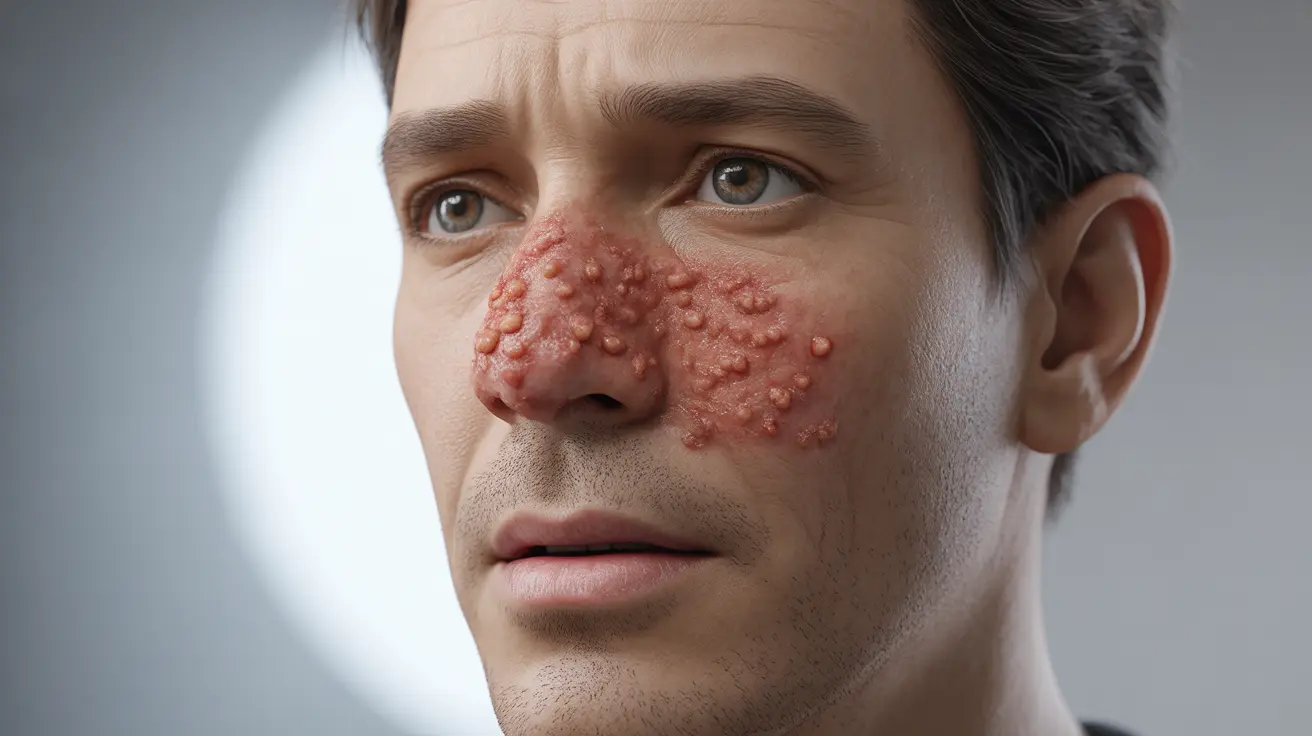When shingles affects the nose area, it requires immediate attention due to its potential complications and proximity to the eyes. This location-specific outbreak of the varicella-zoster virus can present unique challenges and risks that differ from shingles appearing elsewhere on the body. Understanding the signs and proper treatment approaches is crucial for preventing serious complications.
The nose and surrounding facial area contain important nerve pathways connected to your eyes and other sensory organs. When shingles develops in this region, early recognition and prompt medical intervention become essential for protecting your vision and overall health.
Early Warning Signs of Shingles on the Nose
Shingles on the nose typically begins with distinct symptoms that shouldn't be ignored:
- Tingling or burning sensation on or around the nose
- Increased sensitivity to touch in the affected area
- Redness or skin discoloration
- Mild to severe pain before any visible rash appears
- Small clusters of fluid-filled blisters
These initial symptoms often appear on one side of the nose or face, following the pattern of the affected nerve pathway. Early recognition of these signs can lead to more effective treatment outcomes.
Understanding Hutchinson's Sign
Hutchinson's sign refers to the appearance of shingles symptoms on the tip or side of the nose. This crucial indicator suggests potential involvement of the nasociliary branch of the trigeminal nerve, which can affect eye health.
The presence of Hutchinson's sign often indicates:
- Increased risk of eye complications
- Possible involvement of deeper facial structures
- Need for immediate medical evaluation
- Higher likelihood of requiring specialized treatment
Potential Eye Complications
When shingles affects the nose area, several eye-related complications may develop:
- Inflammation of the cornea (keratitis)
- Increased eye pressure
- Vision changes or blurriness
- Light sensitivity
- Eye pain or redness
These complications require immediate medical attention to prevent permanent damage to your vision.
Treatment Approaches
Treatment for shingles on the nose typically involves a comprehensive approach:
Antiviral Medications
Early administration of antiviral drugs is crucial and may include:
- Acyclovir
- Valacyclovir
- Famciclovir
Pain Management
Pain control methods often include:
- Prescribed pain medications
- Topical treatments
- Cool compresses
- Over-the-counter pain relievers
Eye Protection Measures
Additional treatments may be necessary to protect your eyes:
- Antiviral eye drops
- Protective eye patches
- Regular ophthalmological monitoring
- Specialized eye medications if complications develop
When to Seek Emergency Care
Immediate medical attention is necessary if you experience:
- Any symptoms of shingles on or near your nose
- Changes in vision
- Severe eye pain
- Facial weakness or paralysis
- Spreading of the rash to other areas
Frequently Asked Questions
What are the early signs and symptoms of shingles on the nose?
Early signs include tingling or burning sensations, skin sensitivity, and pain before the rash appears. A red rash followed by fluid-filled blisters typically develops within a few days, usually affecting one side of the nose.
Why is Hutchinson's sign important when shingles appear on the nose?
Hutchinson's sign indicates involvement of the nasociliary nerve, suggesting potential eye complications. This sign serves as a warning that immediate medical attention is needed to prevent possible vision problems.
How can shingles on the nose affect the eyes and vision?
Shingles near the nose can lead to various eye complications, including inflammation, increased eye pressure, vision changes, and potential permanent vision damage if left untreated.
What treatments are recommended for shingles on the nose to prevent eye complications?
Treatment typically includes antiviral medications, pain management strategies, and specific eye protection measures. Your healthcare provider may prescribe antiviral drugs, pain relievers, and specialized eye medications if needed.
When should I seek medical help if I suspect shingles on or near my nose?
Seek immediate medical attention if you notice any symptoms of shingles on or near your nose, experience vision changes, or develop eye pain. Early intervention is crucial for preventing serious complications.




